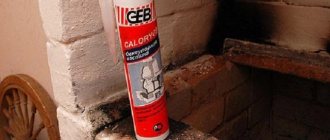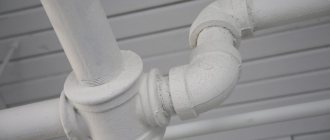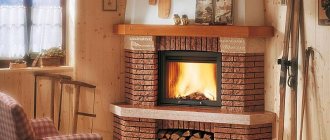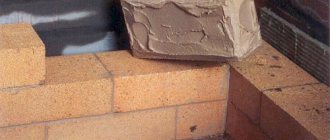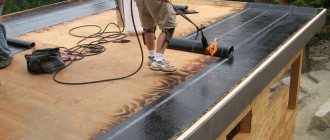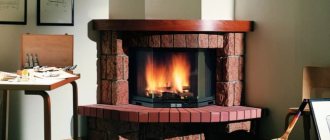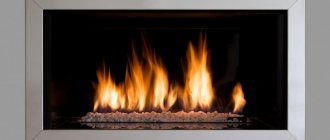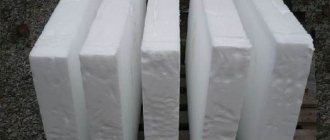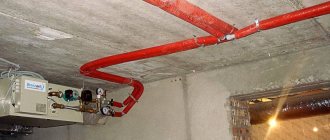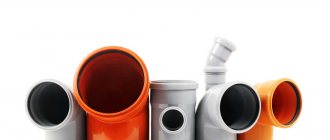High-temperature furnace sealant allows you to seal holes and cracks, which is essential for the proper and safe functioning of the heating unit. The main feature of this sealant is that it is able to adapt to different temperatures without changing its properties.
The market offers a wide selection of high-temperature sealants from various manufacturers, each of which has its own advantages and disadvantages, which are best assessed before purchasing rather than during operation of the furnace.
Areas of application of thermo-sealants and what are the dangers of ignoring cracks in stoves and fireplaces?
Fireplaces and stoves develop cracks in the facing layer during frequent and prolonged use.
This is unsightly from an aesthetic point of view, and is also dangerous to health:
- Fuel consumption increases - additional air from outside enters the combustion chamber, which speeds up the combustion process. You will have to add fuel more often, the consumption will increase 2-3 times.
- Soot and soot - through even the smallest cracks, soot gets out and settles on the ceiling, floors and furniture around the fireplace. You will have to clean several times a day.
- The entry of carbon monoxide into the living room - through cracks, smoke, which should completely exit into the chimney, leaks into the house. This is dangerous due to the development of carbon monoxide poisoning, especially in the absence of proper ventilation.
The most dangerous condition that can develop when the heating system depressurizes is the formation of combustion in the chimney. Due to the high concentration of oxygen and the decrease in combustion temperature in the combustion chamber, highly flammable soot forms on the inner walls of the chimney.
To prevent these negative consequences from overshadowing the operation of the stove or fireplace in the house, heat-resistant sealant is used for minor repairs. This is convenient, since you can cover up a gap or crack yourself at any time, postponing major repairs until the summer.
Heat-resistant sealants are also used for:
- Sealing chimney pipes during installation and repair: sealing small and large cracks along the contour and on the chimney itself.
- Waterproofing of contact points between the roof and chimneys made of various materials.
- Bonding heat-resistant gaskets with metal fittings.
- Seal cracks on the outside of a brick or metal combustion chamber.
Some sealants can be used to restore fire-resistant masonry if there is damage, but there is no way to redo the masonry.
“Craftsmen” claim that there is no point in spending money on sealants, since clay successfully copes with their function. But no kaolin compound can dry out so quickly and seal all sorts of cracks so reliably.
Expert opinion
Borodin Vasily Platonovich
Stove mason, specialist in fireplaces, stoves and heating systems
In practice, sealant is a “lifesaver” if urgent repairs are needed. You will have to tinker with the clay mortar, and the joints between the brick and the metal slab cannot be properly sealed a priori.
Scope of application
The special properties of high-temperature sealants are widely used in industry and construction. Heat-resistant sealants are widely used in professional and household applications. The difference is that compositions for professional work have properties that allow them to withstand higher temperatures.
High-temperature silicate sealants are used in the construction and repair of furnace equipment, for sealing smoke exhaust pipes, and filling any damage, cracks and seams in concrete and other structures. They are used in electrical and installation work.
To seal stainless steel chimneys, silicone sealants are used, which have good water and heat insulating properties.
Sodium silicate-based automotive exhaust manifold sealants contain clay substances, fiber optics, and metal shavings. They are ceramic and are designed to protect the engine from combustion products. They are used for installation and repair of the motor system, reducing the level of exhaust, which eliminates the penetration of toxic substances into the car body.
The composition for fixing bearings is particularly strong and is intended for connecting couplings and bolts and other equipment. Its area of application is shipbuilding, automotive and other branches of mechanical engineering.
Special types of plumbing sealants are used to seal threaded connections of plastic and metal pipes in water supply systems. In addition to heat resistance, they have properties that ensure good adhesion to the bonded surface of metal and plastic. Anaerobic sealant for fixing threads has advantages over fum tape and plumbing thread - it quickly sets and reliably adheres to the elements: apply, attach, and you can use it.
A special heat-resistant silicone sealant is used for installing and sealing hobs in domestic and industrial premises. Hobs are either gas or electric. Their metal or stainless steel body is equipped with glass and ceramic elements, so the sealing material must have adhesive properties and good thermal insulation. In industrial panels, there are structures made of metal and cast iron, therefore the requirements for adhesion when sealing these surfaces are different. Silicone sealants are used to glue and fix the panels, providing maximum protection against fire and gas leaks.
When sealing an oven, it is necessary to correctly calculate the exposure temperature. You also need to take into account the factor of mechanical damage, since ovens are subject to frequent movements, which leads to abrasion of the insulating composition and, over time, requires new sealing. Unlike them, bread makers are fixed, as they say, “tightly”, and do not require frequent sealing.
Silicone temperature-resistant sealants are also used for sealing, installing and repairing water heating boilers, steam rooms and baths. The differences between mixtures for glass and water are in the hydro- and thermal insulation of aquarium surfaces and swimming pools.
For outdoor work, when gluing sandwich panels, waterproof types of thermosealants are used to ensure moisture resistance and heat resistance. In everyday life, heat-resistant sealants are used to repair irons and kettles.
Thiokol and hybrid sealants are used in the space industry, aviation and mechanical engineering. Due to their high resistance to environmental influences, they are widely used in the field of construction and electrical engineering. Due to their moisture permeability and adhesion, they are used in the installation and repair of metal structures of roofs and ceilings.
In the industrial area, these types of sealants are used in the production of railway and other types of transport for road transportation. Their properties significantly affect the weight of any product, making it lighter, which leads to savings in energy consumption. It also speeds up assembly and installation. Sealant replaces welding work, and bolts, nuts and screw connections become simply unnecessary. This cost savings provides the main advantage of this type of sealing. This is not the entire range of uses of heat-resistant sealants.
Types of high temperature sealants
High temperature sealants differ in the composition of their thermal paste. It is this factor that allows the production of sealants with different temperature gradients, used for finishing various parts of stoves and fireplaces.
Silicate heat-resistant sealant
The base is sodium silicate. Outwardly it looks like a black plastic mass that is convenient to work with. When hardened, it forms a dense, inelastic, heat-resistant layer.
Characteristics:
- Long-term use temperature - 1300°C.
- Short-term use temperature – 1400-1500 °C.
- Hardening time is 15 minutes, subject to the recommended ambient temperature.
- Seam thickness – 15 mm.
- Deformation without destruction of the thermal layer – 7%.
Advantages:
- It hardens quickly and is activated within the temperature range of 1-40°C.
- Does not have a pronounced toxic odor.
- The mass is plastic, easy to apply and knead.
- Long service life.
- Does not cause cracks to expand when heating an already hardened composition.
Flaws:
- It is better to use in those stoves and fireplaces that have already shrunk, otherwise there is a risk of cracking of the sealant when the stove materials expand from heating.
Great for filling cracks and gaps
Silicate sealant is recommended for use in the following cases:
- Sealing cracks and gaps that formed during the operation of fireplaces and stoves between the metal elements of the slabs and the brickwork. The adhesion in this case is better than that of any other sealant, paste or kaolin mixture.
- Sealing cracks in combustion chambers and surfaces that are in direct contact with fire and high-temperature gases.
- Sealing the joints between the roofing surface and the chimney.
- Sealing cracks and eliminating leaks from heating boilers.
Not all silicate sealants are fireproof. When sealing cracks in combustion chambers, choose sealants that indicate that use near fire is permitted.
Silicone heat-resistant seal
This category of sealants is distinguished by the addition of iron oxide to the silicone composition, which has a characteristic pink tint. Their main advantage is zero deformation, which allows the use of sealants not only in repairs, but also in the installation of heating devices.
Characteristics:
- Complete drying time is 20 minutes.
- Operating temperatures – up to +300°С.
- The ability to seal narrow but deep cracks, which is facilitated by convenient packaging in the form of a tube with a thin spout.
- Can be applied to a cold or warm base without worrying about the quality of the paste.
- Increased resistance to UV radiation, which allows the composition to be used for sealing joints on the roof.
Advantages:
- Long service life
- Waterproof
- Does not change shape when the oven temperature fluctuates, does not deform under increased loads
- Cost is lower than silicate, convenient packaging
Flaws:
- Suitable only for those surfaces whose operating temperature is within +300°C.
Main Applications
Silicone heat-resistant sealants have found themselves in the following areas of application:
- sealing chimneys on the roof;
- treatment of smoke exhaust ducts of metal and brick chimneys;
- sealing blind cracks on the surfaces of stone fireplaces and stoves.
Expert opinion
Borodin Vasily Platonovich
Stove mason, specialist in fireplaces, stoves and heating systems
Also, the high-temperature composition is used to seal joints in heating systems and circuits with elevated temperatures.
Popular brands of heat-resistant sealants
In any hardware store you can find a large number of sealants from various manufacturers, both domestic and foreign. Next, several of them will be considered, from among those that have earned the trust of the Russian consumer and are in wide demand.
"MAKROFLEX"
MAKROFLEX is an Estonian company that produces various sealing compounds and insulating materials. Its product range includes fireproof and heat-resistant sealants, which have long been used in construction and renovation and have earned many positive reviews.
- "MAKROFLEX HA147" is a fire-resistant sealant based on inorganic compounds. Hardening of this composition occurs as a result of the evaporation of water from it, after which a rigid compound is formed that is resistant to cracking and high temperatures. It is used for repairing connections with low mobility, which are exposed to high temperatures, reaching up to 1200 permanently and up to 1500 degrees for a short time.
This sealant is used for various materials - brick and concrete, glass and steel, cast iron and anodized aluminum.
Cartridge with sealant "MAKROFLEX HA147"
This sealing material has the following advantages:
— excellent resistance to open flame;
— high adhesion with most modern building materials;
— this sealant is not subject to shrinkage;
— it does not emit smoke or other harmful fumes;
- in a frozen form - susceptible to staining.
Areas of application for MAKROFLEX HA147:
— sealing of various gaps in furnaces, both in brick and metal ones;
— sealing of connections in contact with open fire;
— installation of combustion chamber lining;
— fixation of fire-resistant slabs and panels;
— sealing of connections in electric furnaces, ovens, chimneys, as well as in car exhaust pipes.
Prices for heat-resistant sealant MAKROFLEX
heat-resistant sealant MAKROFLEX
- “MAKROFLEX heat-resistant red 3 ” is a special silicone-based material intended for use in connecting assemblies of various devices and structures exposed to constant exposure to elevated temperatures, as well as thermal changes.
The material has high adhesion to ceramic parts, glass, enamel, aluminum, wood, artificial stone and brick. At the same time, it is completely unsuitable for acrylic surfaces and metal parts susceptible to corrosion, as well as for natural stone.
The packaging is similar in appearance, but the performance characteristics are completely different, so you need to be careful when choosing
The characteristics of this sealant include the following:
— application temperature – in the range from +5 to + 40 degrees;
— operating temperatures: from -65 to +260 ºС permanently, +315 ºС – temporarily;
— application time after opening the cartridge – approximately 15 minutes;
— guaranteed drying time with a layer thickness of 5 mm is 48 hours (at a temperature of +23 degrees and 50% humidity).
Areas of application for MAKROFLEX heat-resistant red 3:
— heating devices operating within the specified temperature range;
— some areas of furnaces;
— elements of ovens;
— ceramic panels installed on kitchen stoves;
— repair of heating circuits;
— repair of electric motors and pumps.
Video: example of practical use of heat-resistant sealant “Makroflex HA 147”
"SOUDAL"
“SOUDAL” - this sodium silicate-based sealant for stoves and fireplaces is manufactured by a Belgian manufacturer. The material is resistant to high temperatures, reaching up to 1500 degrees. The sealing composition does not contain asbestos and does not crack or crumble after hardening.
Heat-resistant sealant “SOUDAL”, popular among stove-makers
The paste is black in color, so it is well suited for sealing cast iron stove elements. In addition, paint adheres perfectly to a frozen seam, and thanks to this, the seam can be disguised as a surface of any color. The maximum depth and width of the gap to be sealed should be 5 mm. If wider and deeper cracks occur, for example, in bricks or seams between them, you need to seal the depth of the gap with another composition, leaving 5 mm from the wall surface for sealant. After hardening, this composition does not crack or crumble.
Prices for heat-resistant sealant SOUDAL
heat-resistant sealant SOUDAL
The main areas of application of this composition include:
-sealing and waterproofing of passages and junctions of the chimney pipe with the roof;
— installation and repair of furnace equipment, including lining of the heating chamber;
— repair of heating boilers;
— sealing gaps between brick surfaces of stoves and cast iron elements.
"Krass"
“Krass fireplaces and stoves” is a Russian-made sealing compound that is highly fire resistant. This sealant is intended for the construction or repair of brick stoves, heating devices and units in areas exposed to open fire. The composition can withstand temperatures reaching up to 1250 degrees.
Tube of heat-resistant sealant “Krass fireplaces and stoves”
The sealant is made on the basis of liquid glass and has a black color. It is wear-resistant, gas-tight, and forms a non-shrinking rigid seam. The paste has high adhesion to stone, brick, metal and ceramics. The composition does not spread when applied, and when hardened it does not crack. It can be used to seal surfaces or chimney joints outdoors as it is weather resistant.
This composition is characterized as follows:
— pasty consistency;
- hardening system - fiberglass, liquid glass and kaolin;
— application temperature – from +5 to +40 degrees;
— operating temperatures: from -15 to + 1250 degrees;
- hardening period - a day (it, however, depends on atmospheric humidity and temperature - the optimal parameters indicated by the manufacturer are 50% humidity and a temperature of 23 degrees, as well as the thickness of the applied layer);
- setting (formation of a surface film) under the same temperature conditions takes about 5 minutes.
Prices for heat-resistant sealant Krass
heat-resistant sealant Krass
Areas of application for this sealing compound:
— in ovens – areas of direct exposure to fire or high surface temperatures;
- connection of roofing materials to the chimney pipe;
— car repair;
— used at the junctions of ventilation duct sections.
At the same time, it is not recommended to use “Krass fireplaces and stoves” for sealing joints in the circuits of the central heating system, gas supply, as well as in moving seams.
"PENOSIL"
«PENOSIL is also an Estonian manufacturing company that produces sealing compounds for a wide range of applications.
- “ PENOSIL Premium +1500° C Sealant” is a professional fire-resistant and heat-resistant sealant made on the basis of liquid glass and designed to protect gaps and seams from moisture and elevated temperatures reaching up to 1500 degrees.
Cartridge with heat-resistant sealant “PENOSIL Premium +1500°C Sealant”
The composition of “PENOSIL Premium +1500°C Sealant” is characterized as follows:
— the sealant has excellent adhesion to brick, tile, natural and artificial stone, metal and concrete;
— the composition is durable - the laid seam does not crack or crumble;
— does not contain asbestos fibers;
— the paste is black.
Prices for heat-resistant sealant PENOSIL
heat-resistant sealant PENOSIL
Areas of application for this sealant:
— filling of seams and cracks, as well as their compaction in areas of furnaces and boilers with direct exposure to fire and high temperatures;
— insulation and sealing in sections of the stove and chimney that come into contact with high temperatures and moisture;
— repair of walls of furnace and boiler equipment;
— sealing the passages of chimney and ventilation pipes through the roof.
The material must not be used in movable or deformable structures.
- "PENOSIL High Temp" is a heat-resistant silicone-based sealant. It is used to seal and waterproof seams exposed to temperatures up to 250 degrees, located both inside and outside a residential building.
Heat-resistant sealant “PENOSIL High Temp”
The characteristic features of this material include the following:
— application at temperatures from +5 to +40 degrees;
— operating temperatures after complete hardening – from -40 to +250 degrees;
- permissible seam mobility - up to 20%;
- quick setting of the composition - within 20 minutes;
- high adhesion to most building materials - metal, brick, glass, plastic, ceramic tiles, wood;
— the sealant is a paste-like composition of red color.
Areas of application for PENOSIL High Temp:
— sealing of moving seams exposed to high temperatures;
— sealing of passages and joints with the roof of chimney pipes;
— installation of metal, including sandwich chimneys of boiler equipment:
Using heat-resistant sealant “PENOSIL High Temp” to seal the connection of metal chimney links
— repair of automobile components, except those that come into contact with fuel;
— installation work on the arrangement of water supply, heating and ventilation systems.
Rules for choosing heat-resistant sealant for stoves and fireplaces
In order for the purchase to be successful and the repairs to be of the highest quality, when choosing a sealant it is important to determine the following nuances:
- Operating temperature – you need to evaluate in which part of the oven the sealant will be used. If this is a chimney and external cladding, where the temperature is in the range of +300°C, then a silicone-based paste is suitable. Silicate sealants have a much higher operating temperature and are suitable for treating combustion chambers.
- Contact with open flames and gases - the sealant must be fire resistant if it is to be used inside a fireplace or stove. For exterior repairs, the usual composition is suitable.
- Degree of environmental friendliness - sealants should not contain components that, when heated, provoke the formation of toxic compounds. Otherwise, when inhaling such vapors, there is a risk of intoxication.
Naturally, pay attention to the brand and price. Unknown brands at suspiciously cheap (2-3 times lower) prices are a reason to think about possible risks.
How to properly use heat-resistant sealants?
High temperature sealants should be applied to previously prepared solid substrates. Dust, oil stains, small debris and other contaminants significantly impair adhesion to the surface. When applying silicone compounds, the base must be dry, but before using silicate sealants it can be moistened.
Most heat-resistant materials are produced in cartridges or sausages. For their application, special mounting guns are used.
Sealants must be applied carefully so as not to stain adjacent surfaces. To do this you need to use masking tape. Also, when creating a gasket, care should be taken to ensure that the material is not squeezed into the inside of the equipment assembly. This is especially true for automotive applications.
Silicone sealant cures due to moisture in the air. Typically the curing time is about 24 hours. But the thicker the layer of material, the more it will cure.
Silicate sealant also cures within 24 hours. After this, the seams should be fired using a portable gas burner.
The best heat-resistant sealants for stoves and fireplaces
Experts recommend buying heat-resistant sealants from those manufacturers who have earned a name for themselves with decent quality. It is better to avoid buying cheap options that do not have detailed instructions, as there is a risk of purchasing a fake.
TYTAN Professional
TYTAN Professional
Fireproof silicate sealant. Suitable for minor repairs of stoves and fireplaces, chimneys. It contains an admixture of fiberglass, which forms a dense smoke- and gas-proof layer. Has good adhesion to metal, concrete and brick.
Advantages:
- Relatively low cost.
- Operating temperature up to +1500°C.
- The composition does not contain asbestos.
- Can be stored in a tube at sub-zero temperatures.
- Can be used to seal cracks in any parts of fireplaces and stoves.
Flaws:
- Complete drying takes at least 24 hours.
The average cost for a tube weighing 300 g is 250 rubles. After use, the sealant is closed using a threaded cap. It can be stored for quite a long time, maintaining its qualities.
Ognez 1600
Ognez 1600
The sealant allows you to effectively seal cracks and glue surfaces together. A distinctive feature is the need to wet the treated surface with water, which improves adhesion.
Advantages:
- Bonds concrete, glass, brick, stone, ceramics.
- Waterproof, suitable for external chimney sealing work.
- The highest operating temperatures, which allows it to be used in all parts of the heating device.
- Easy to apply with a spatula, convenient to work with.
- Can be painted using varnishes and paints with natural composition.
- High level of environmental friendliness.
Flaws:
- Not identified.
The cost of a domestic product is about 240 rubles. When stored correctly, it is not afraid of freezing and defrosting cycles.
MASTERTEKS PM
MASTERTEKS PM
Polish silicate sealant, black. It is easily applied to the surface without requiring preliminary preparation. Suitable for filling various cracks and sealing joints. Dries relatively quickly.
Advantages:
- A convenient screw cap on the spout prevents air from getting inside the tube during storage.
- Dries quickly if the recommended layer thickness is observed.
- Does not crack when the surface cools.
- Excellent adhesion
Flaws:
- Not identified.
The sealant is good in every sense and is literally ideal when working with a chimney.
Top 5 best offers
The demand for high-temperature silicone and silicate sealants is very high, so such products are present in the product lines of many manufacturers.
In order not to get confused in the variety of offers, we present a list of the most worthy and popular formulations from foreign and domestic companies. The first place was given to the silicate composition from the Estonian manufacturer Penosil. Despite the stated high technical characteristics, the sealant is relatively inexpensive.
Professional heat-resistant product intended for sealing seams and sealing cracks in chimneys, stoves, fireplaces
Penosil is suitable for external and internal use, for example contact with stone, brick, concrete, metal.
Specifications:
- temperature resistance – 1500°C;
- mobility – 0%;
- color – dark gray;
- application temperature – 5-40°C;
- hardening time - about 24 hours;
- volume – 310 ml.
Among the main advantages of fireproof sealant are: low cost, excellent quality, ease of use, versatility. User reviews are mostly positive; Penosil copes with the task. The downside is the hardening time; the oven can be turned on a day after treatment.
Makroflex TA145 is characterized by high adhesiveness, elasticity, and weather resistance
It is not advisable to use the composition for processing metal elements prone to corrosion (lead, copper). During the curing process, the sealant releases acetic acid fumes.
- stable heat resistance - 60-260°C, short-term exposure is acceptable - up to 315°C;
- width of the applied layer – 6-30 mm, depth – from 2 mm;
- hardening time - about 2 days;
- application conditions – temperature within 5-40°C.
During polymerization, it is necessary to ensure good ventilation in the room - inhalation of acid vapors can lead to poisoning. Once dry, the sealant is safe.
3rd place – Soudal
Sealing paste based on sodium silicate. There is no asbestos in the composition, so after hardening the insulating layer does not crack or crumble. Temperature resistance of Soudal – 1500°С.
Scope of application – sealing of fireplace inserts, seals around chimneys, conservation, repair and installation of stove equipment, heating boilers
Suitable for concrete, metal, brick bases.
- mastic color – black;
- maximum heat resistance – 1500°C;
- operating temperatures – 1-30°С;
- deformation during movement – no more than 7%;
- film formation time – 15 minutes at 20°C and humidity 65%;
- cartridge volume – 300 ml.
Heat-resistant composition based on silicate. The sealant is inert to chemical influences and perfectly resists atmospheric factors.
Once cured, Kraftflex FR150 forms a durable fire-resistant layer. The sealant can be used indoors and outdoors
There are no special restrictions on the use of Kraftflex FR150. It is suitable for sealing elements exposed to direct flame, fixing fire bricks and air ducts.
- paste color – black;
- maximum permissible heating temperature – 1500°C;
- film formation time – 15 minutes;
- hardening speed – 2 mm/24 hours;
- operating temperature – 5-40°C;
- packaging – 300 ml.
The sealant is indispensable for objects operated in extreme conditions. The composition can withstand temperatures down to -40°C. Cons of Kraftflex FR150: drying time, relatively high price.
The sealant is suitable not only for sealing seams in chimneys and furnaces, but also for sealing joints between metal elements, except for lead and copper parts
Use on mirror and stone surfaces is not recommended.
In practice, Germent has shown reliable adhesion to various materials. The silicone insulator is petrol and oil resistant and is not afraid of UV radiation.
- remains stable at -65°C... 260°C, short-term temperature jumps up to 315°C are acceptable;
- film formation time – 10 minutes;
- polymerization rate – 1.5 mm/day;
- color – brick red;
- elongation at break – 115%;
- bottle volume – 300 ml.
The fifth place in the ranking is due to the high cost of the product. In practice, Germent has proven itself well - it is easy to apply, dries quickly enough, and forms a reliable adhesion to materials.
The principle of working with high-temperature sealants
In order for the repair or installation to take place at the highest level, the master should divide the work into several stages, and then complete each one taking into account some of the nuances. The more correctly this is done, the longer the thermal composition will last.
Silicone compounds
Germent - moment
This sealant helps to connect two surfaces made of different materials, as well as seal fairly large cracks.
We will divide the work into several stages:
- Surface preparation : sand the metal surface, remove dust; if water was used for cleaning, wait until it evaporates completely.
- Preparing the sealant : the container is carefully opened and placed in a special construction gun, which makes application of the product more comfortable.
- Applying sealant to the surface : the thickness of the extruded layer should be slightly less than the crack itself. During polymerization, the sealant will fill all microcracks and increase slightly in size.
- Cleaning up stains : Before the mixture has set, excess should be removed with a spatula.
The drying time directly depends on the temperature and humidity in the room. The warmer and drier it is, the faster the sealant will polymerize. Accordingly, in a cool and damp room, the 20 minutes recommended by the manufacturer in practice can stretch to 40-50 minutes.
Silicone pastes
The main difference is the need to work quickly and accurately, since silicone thermal pastes harden very quickly, and there will be no way to correct anything in the future.
We work according to this scheme:
- Surface preparation : sand all surfaces to be treated. If there are seams, then their outer part should be taped with masking tape so as not to stain the surface.
- Preparation of sealant : the tube is inserted into the gun, the tip is cut off diagonally.
- Application : apply a thin layer quickly enough, remove excess immediately.
Expert opinion
Borodin Vasily Platonovich
Stove mason, specialist in fireplaces, stoves and heating systems
I do not recommend making a layer of paste larger than stated in the instructions. This will cause a relatively long drying time, and also does not guarantee a high degree of adhesion of surfaces.
Heat resistant sealants
This type of sealing materials is produced on a silicate basis, which makes them stable at temperatures close to 1300-1500 °C. Some of them can even withstand temperatures of 1600 °C for a certain time.
In this case, they are dark gray or black in color and are called fire-resistant pipe sealants (the word “fire-resistant” is on the outside of the tube or package).
Some important rules when using heat-resistant sealants:
- Work with silicate sealing materials is carried out in the temperature range of +5 - +40 °C.
- The required sealing effect is achieved only in the case of rough and uneven surfaces. For this purpose, if necessary, the areas where the composition is applied are treated with abrasive materials.
- In addition, the surfaces should be degreased with acetone and then allowed to dry for 15-20 minutes.
- When the paste hardens in places where the sealant is applied, very strong and hard seams are obtained, so it is not recommended to use heat-resistant compounds for structures operating in vibration conditions.
- Traces of sealing material can be removed with a wet cloth or rag, but only before the material hardens. After hardening, this will require the use of mechanical force and some simple tools.
Tips and tricks
Experienced experts recommend the following:
- Never use sealant for purposes other than its intended purpose. If it is not intended for repairing combustion chambers, then there is no point in using it there. Saving a penny - a large-scale loss, plus harm to health and danger to life.
- Carry out repairs after stopping the combustion process, taking into account the operating temperature of the sealant, as indicated on the packaging.
- Remember that sealants must dry thoroughly. Give them the time recommended by the manufacturer.
- To improve adhesion between surfaces, they should first be sanded well. A rough surface will improve the adhesion of metal and brick.
- Remove excess thermo-compositions before they harden, otherwise it will be extremely problematic to do this later.
- Do not buy products from dubious brands that do not contain instructions for use.
- Always follow the precautions stated by the manufacturer.
Remember that repairing cracks and insulating individual sections of stoves and fireplaces is a responsible job. If you don’t have the skill, then it’s better to entrust it to professionals.
Application area
Sealant for fireplaces and stoves is a synthetic composition, which in its structure is similar to a paste. One- and two-component formulations are available for sale. The first of these materials is packaged in tubes intended for a mounting gun. In professional activities, two-component compositions are used. They are mixed in a certain ratio. Such compositions are used for large-scale work.
The presented type of sealants has several areas of application. Most often, this composition is purchased by owners of private houses to seal holes and cracks in brick or metal (welded) combustion chambers of fireplaces or stoves.
In addition, this composition can be used during the installation or repair of chimneys, as well as for the exterior finishing of fireplaces and brick stoves. If it is necessary to glue fire-resistant gaskets, for example, from asbestos cord, to metal fittings, a sealant is also used. It reliably fixes heat-resistant material to valves, doors, as well as iron and cast iron plates.
Heat resistant sealant is also waterproof. Therefore, it is used for the purpose of waterproofing the junction of the chimney to the roofing materials. It is worth noting that the pipes must be made of either brick or metal.
Frequently asked questions and answers
It is not always possible to find complete information in the instructions on how to properly use the sealant. This leads to a number of errors and problems in the future, which in no way depends on the quality of the thermal paste itself.
Is it possible to seal the joint between the chimney and the roof when it is frosty outside?
It is better to carry out all work with sealant in the dry and warm season, then its adhesion will be as strong as possible. Look for sealants that work in cold temperatures, but be aware that they will take a long time to dry. If it is -2°C, then most likely the process will be successful. If we are talking about severe frosts, then it is better to wait for a thaw, since the mixture will not be able to polymerize correctly.
Experts use a trick, forcing the sealant to work using heat guns. The latter are located in close proximity to the processing site, increasing the temperature by 10-15°C.
The sealant is not drying well, what can I do to help?
This picture occurs if the ambient temperature approaches zero. Accordingly, to solve the problem, the surface and air should be slightly warmed up. But the best adhesion of the two surfaces occurs when all the work is completed in the summer.
Can the sealant cause a spark?
If we talk about those sealants that are used for combustion chambers, then they do not contain any elements that can somehow influence the combustion process. But such a sealant must be marked “fire resistant”. This means that it can be used in areas of active combustion.
In conclusion, it is worth noting that heat-resistant sealants have different compositions and can be used for different purposes. Before purchasing, it is important to evaluate at what temperatures it will be used in order to determine the desired composition. Please ensure that the sealant does not contain hazardous components that can release toxic substances when heated.
What means are used to create a tight connection?
Special polymer-based compounds have been developed for sealing chimneys, stoves and fireplace inserts. Temperature sealants have a gel-like, fluid consistency, which allows them to flow into the smallest cavities, joints, and cracks. They differ in composition and have different operating temperature limits. Most are produced in special cylinders compatible with the mounting gun.
Note! The uniqueness of sealing compounds for furnaces is that, in addition to their resistance to high temperatures, they are not destroyed by repeated, significant changes in temperature - from -60 to +250 and above.
Sealants for heating systems differ in several parameters:
- according to the constituent components - there are two and one component;
- according to acidity level – acidic and neutral;
- in relation to temperature effects - divided into heat-resistant (low-temperature) and heat-resistant (high-temperature);
- by consistency - gels, pastes.
We recommend that you read: Drainage pipe wrapped in geotextile: features and installation rules
Single-component formulations are sold in one bottle. They are ready to use and do not require additional preparation. These insulating compounds are popular among craftsmen. Their use does not require specific knowledge or skills. When applied to a surface, they harden at room temperature for a certain time.
Two-component heat-resistant sealants consist of two substances, each of which is placed in a separate container. The basis is a polymer; the addition is a catalyst that promotes the solidification of this polymer. Before use, a two-component insulator is prepared by mixing the ingredients. Violation of the proportions or technology of preparing the mixture leads to loss of sealing qualities. The finished mixture has virtually no shelf life. It should be used for a short period of time.
Note! Difficulties in preparing two-component compositions for work lead to the fact that non-specialists do not risk using them. Such sealants are used by professional stove makers and builders.
Heat-resistant compositions include those whose upper limit is limited to 150-250 degrees. They are intended for the external walls of stoves, fireplaces, and brick chimneys.
Heat-resistant or high-temperature sealants are called sealants, the resistance of which reaches a value of 1500 degrees. These compounds can be used not only for the inside of steel pipes, but also in open fire zones - to seal seams and burnouts in a fireplace or stove insert.
Note! A special group consists of polymer adhesives and sealants of the MS brand. These are high-strength polyurethane compounds that can withstand temperatures up to 200 degrees, do not collapse under the influence of ultraviolet radiation, atmospheric influences, retain elasticity, and have increased adhesion to the surfaces being connected.
Polymer adhesives-sealants are rapidly gaining popularity in the construction, industrial (including machine-building) segment of European countries.
In everyday life, for gas and electric stoves, adhesive-sealant type Dow Corning Q3 - 1566 is used.
We recommend that you familiarize yourself with: Features of a sandwich pipe and rules for its installation when constructing a chimney
Technical characteristics of heat-resistant compounds
Silicone-based sealant for fireplaces and stoves has certain technical characteristics. This must be taken into account when choosing a composition. Thus, heat-resistant sealant can be used in the temperature range from -40 to +250ºС. Some compositions are distinguished by an increased heat-resistant threshold, which reaches 350ºС.
The presented compositions are sold in tubes of 300-310 ml. They are easy to apply using a mounting gun. The composition hardens in 20 minutes.
The sealant is characterized by high adhesion to smooth and rough materials. These include metal, glass, ceramics, brick, etc. The composition is applied to the surface when the heating device is turned off. In this case, the ambient temperature during installation should be from +5 to +40 ºС.
The sealant allows you to seal seams with a thickness of 6 mm or more. The cost, depending on the manufacturer, ranges from 190 to 500 rubles.
Advantages and disadvantages
The most common area of application of heat-resistant sealants are high-temperature connections of stoves, fireplaces, boilers, chimneys, and they are also used to repair various systems inside automobiles and other equipment.
Like any product, heat-resistant sealing materials have their advantages and disadvantages.
Positive properties.
- The operating mode for using heat-resistant sealant is in the range from 1200 to 1300 degrees, but its composition is capable of withstanding an increase in the working environment to 1500 degrees for a short period of time.
- The use of heat-resistant sealing compounds is universal - they are suitable for almost any surface, you just need to choose the right type of sealant.
- Manufacturers of silicone sealants currently produce products with a diverse range of colors, which greatly simplifies the buyer’s task when choosing.
- Heat-resistant sealants containing sodium silicate are currently successfully displacing asbestos products, which are recognized worldwide as carcinogens, from the market.
- The use of sealant makes it possible to increase the degree of fire protection of structures and structures. Often, sealants are used when installing ventilation ducts, installing heated floors, and installing door panels.
Negative properties.
- The vast majority of high-temperature sealants contain iron oxide, therefore, when in contact with working surfaces during the polymerization process, they can paint them a rusty brown color, which in certain conditions is undesirable and does not look entirely aesthetically pleasing.
- The silicone contained in the sealant does not allow paint to be applied to the sealing layer - it does not adhere to it. This is not always convenient, for example, when repairing a car.
- The sealant, which contains silicone, dries at a rate of approximately 2-3 millimeters per day. Thick seams may not harden inside at all, since air access is important for the polymerization process.
- It is possible to work with heat-resistant sealants only at temperatures above zero; low temperatures during installation work will lead to disastrous consequences due to disruption of the polymer process technology.
The use of heat-resistant sealants requires strict adherence to the instructions specified by the manufacturer, as well as compliance with all the nuances that you need to know and understand about this material in order to avoid annoying mistakes.
Varieties
When choosing a high-temperature sealant for stoves and fireplaces, you should take into account that there are two types of compositions on sale. These are heat-resistant and heat-resistant materials. They differ in composition.
Heat-resistant compounds can be used in areas where the temperature does not rise above 350 ºС. Therefore, this sealant is suitable for sealing seams or cracks on the outside of masonry. However, in places where surfaces come into contact with castings, it is worth using materials of the second group. Heat-resistant sealants are also designed for treating chimneys made of sandwich pipes or bricks. It is worth noting that this option is not suitable for a metal single chimney. Only if the pipe belongs to a pyrolysis or condensing boiler can this type of sealant be used for it.
Fire-retardant (heat-resistant) sealants can withstand more heat. It can even be used inside the combustion chamber. A heat-resistant composition is suitable for any type of chimney. If the composition is fire-resistant, it will not deteriorate due to direct exposure to flame. Not every heat-resistant sealant can be called fire-resistant.
Heat-resistant composition
Heat-resistant compounds are made based on sodium silicate. They are able to withstand temperatures of about 1300 ºC for a long time. Silicate sealant for fireplaces and stoves can also be subjected to short-term heating up to 1600ºC. These pastes are black in color. Sometimes the mass may be gray.
After hardening, the paste forms an inelastic hard layer. Heat-resistant sealants are available for sale, which are also sold in tubes for a construction gun. Such compounds do not adhere well to smooth surfaces. They are not used for processing joints of stainless steel chimneys.
Heat-resistant composition
Heat-resistant sealant for stoves and fireplaces is made on a silicone basis. It also contains iron oxide. Because of this, the sealant has a reddish tint. Compositions of this group are available for sale, which differ in temperature threshold. Therefore, you need to pay attention to this before purchasing. It is also worth noting that high-temperature automotive sealant is not suitable for treating stoves and chimneys. This composition is incompatible with cement masonry mortar, as well as metal.
Oven heat-resistant sealant releases water and alcohols when dried, and automotive composition releases acid. Therefore, only special materials are compatible with stove surfaces.
Heat-resistant sealant is not susceptible to the negative effects of ultraviolet radiation, so it is also used for finishing open-air stoves. It repels water. This allows the use of sealant where the chimney passes through the roof waterproofing. It adheres well to surfaces made of brick, metal, and cement. After drying, the layer remains elastic.
